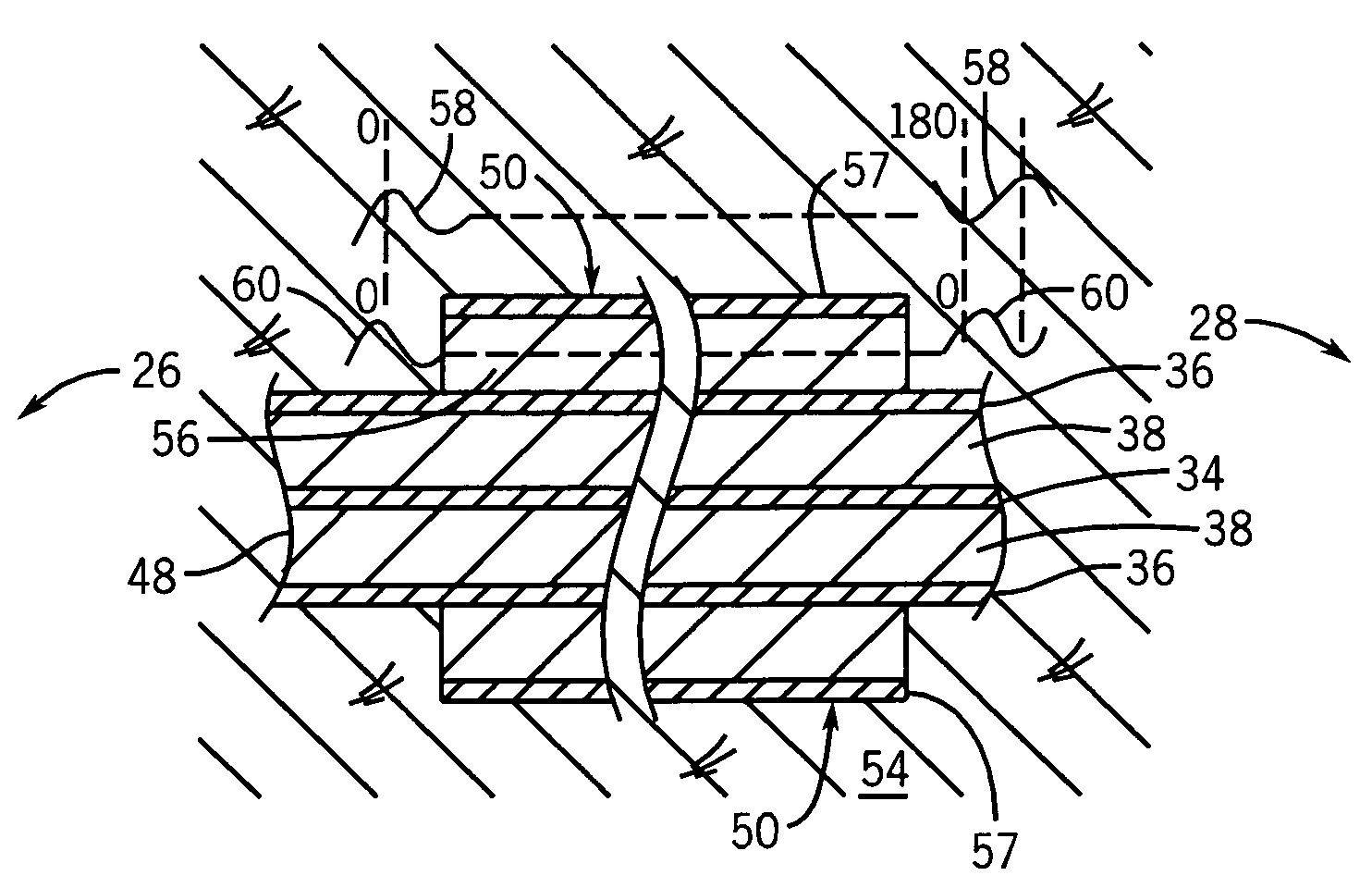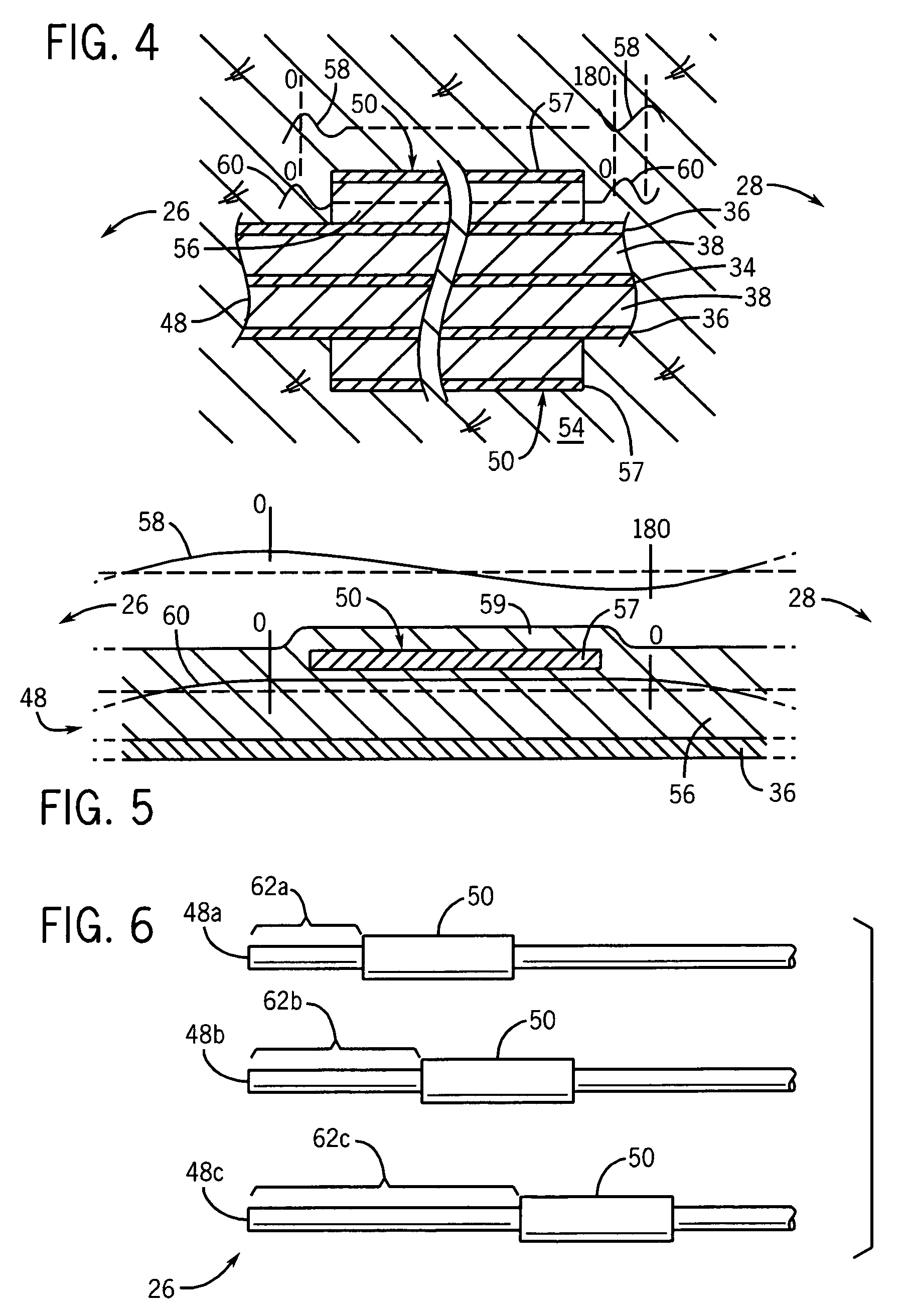Floating sleeve microwave antenna for tumor ablation
a microwave antenna and floating sleeve technology, applied in the field of microwave antennas, can solve the problems of affecting the treatment effect, so as to reduce the heating tail, suppress the sar pattern tail, and reduce the heating
- Summary
- Abstract
- Description
- Claims
- Application Information
AI Technical Summary
Benefits of technology
Problems solved by technology
Method used
Image
Examples
example
[0049]An antenna 48 constructed according to the above-described principles may be based on 50 ohm UT-085 semirigid coaxial cable wrapped with a thin layer of Teflon tape. Generally, the impedance of the antenna is set to be substantially equal to the impedance of the feed line of approximately 50 ohms. The floating sleeve 50 may be made of a section of copper tubing having a 3.2 millimeter outer diameter and a 2.5 millimeter inner diameter and approximately 19 mm in length having a proximal end about 22 mm from the proximal tip of the antenna. The whole assembly may then be rewrapped in Teflon tape and heat shrunk to the coaxial cable. The overall radius of the antenna is relatively small and suitable for intraoperative percutaneous therapies. The power supply may, for example, be a 300-watt power supply operating at 2.45 GHz.
PUM
 Login to View More
Login to View More Abstract
Description
Claims
Application Information
 Login to View More
Login to View More - R&D
- Intellectual Property
- Life Sciences
- Materials
- Tech Scout
- Unparalleled Data Quality
- Higher Quality Content
- 60% Fewer Hallucinations
Browse by: Latest US Patents, China's latest patents, Technical Efficacy Thesaurus, Application Domain, Technology Topic, Popular Technical Reports.
© 2025 PatSnap. All rights reserved.Legal|Privacy policy|Modern Slavery Act Transparency Statement|Sitemap|About US| Contact US: help@patsnap.com



